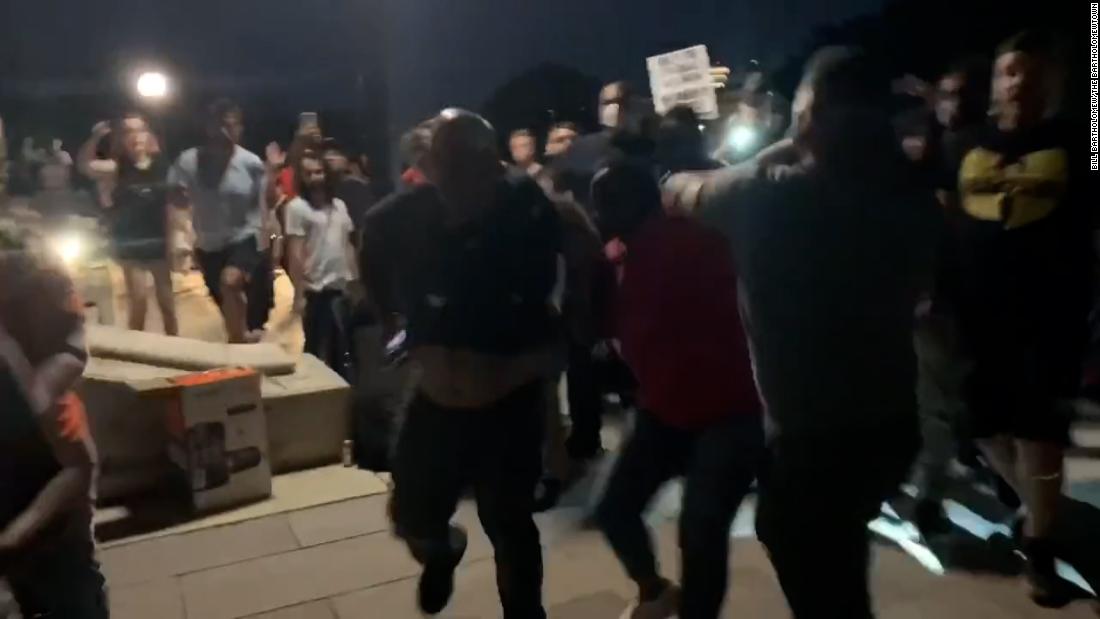
Georgia State Senator Assaulted and Detained During Attempted Chamber Entry
Context and Incident Overview
On March 8th, 2023, Georgia State Senator Emanuel Jones was forcibly removed and detained while attempting to enter the Georgia State Capitol building in Atlanta. The incident has sparked controversy and raised concerns about the use of excessive force and the rights of elected officials.
Senator Jones’ Perspective
Senator Jones, a Democrat, claims that he was assaulted by a Georgia State Patrol trooper as he attempted to enter the Capitol building to attend a legislative session. He alleges that the trooper pushed him and grabbed his wrist, leading to a scuffle and his subsequent arrest. Jones claims that he was not resisting arrest and that the force used against him was unwarranted.
Official Narrative
The Georgia State Patrol released a statement following the incident, stating that Jones was detained after “disregarding repeated verbal warnings” and “pushing past” a trooper. The statement alleges that Jones “failed to comply” with the trooper’s commands and was “belligerent”. The Patrol maintains that the force used was justified and that Jones was arrested for disorderly conduct and obstruction of justice.
Witnesses and Video Footage
Video footage of the incident shows Jones approaching the Capitol entrance and being met by a trooper. The trooper initially blocks Jones’ entry but later appears to push or grab Jones as he attempts to enter. However, the video does not provide a clear view of the events leading up to the altercation.
Analysis and Perspectives
The incident has garnered significant media attention and has sparked debate over the use of force and the rights of elected officials. Some critics have questioned the Patrol’s claim that Jones was belligerent and resistant, while others have defended the trooper’s actions, citing the need for security and order in the Capitol building.
Civil Rights and Excessive Force
Civil rights advocates have expressed concern over the potential for excessive force against elected officials, especially members of marginalized communities. They argue that the use of physical force should be limited to situations where there is a clear and present danger or where an individual is resisting arrest. According to the use-of-force continuum, minimal force, such as verbal commands and non-lethal restraints, should be employed first.
Security and Order in Public Buildings
On the other hand, law enforcement agencies have a responsibility to ensure the safety and order of public buildings, including the Capitol. It is important to balance the rights of elected officials to access government facilities with the need for security measures to prevent potential threats.
Political Polarization and Trust in Law Enforcement
The incident has also been seen as a reflection of the current political polarization in the United States. Some observers have suggested that the differing interpretations of the incident are based on political biases and preconceptions about law enforcement and the role of elected officials.
Research and Evidence
Research on the use of force by law enforcement indicates that excessive force can disproportionately affect certain demographic groups, including African Americans and other minorities. Studies have also shown that the use of physical force can exacerbate tensions between law enforcement and the communities they serve.
Conclusion
The incident involving Georgia State Senator Emanuel Jones raises complex questions about the use of force, the rights of elected officials, and the role of security in public buildings. While there is conflicting information and perspectives on the incident, it is important to consider the broader implications of such incidents and to work towards establishing clear guidelines and promoting dialogue between law enforcement and elected officials.
Ultimately, the goal should be to ensure that the rights of all citizens, including elected officials, are protected while also maintaining the safety and order of public spaces.
Reflection on Broader Implications
This incident serves as a reminder of the ongoing tensions between law enforcement and the communities they serve. It highlights the importance of addressing excessive force, promoting transparency and accountability, and fostering trust between law enforcement and the public.
Furthermore, it underscores the need for dialogue and cooperation between different perspectives to address complex issues such as public safety, civil rights, and the role of elected officials in society.



